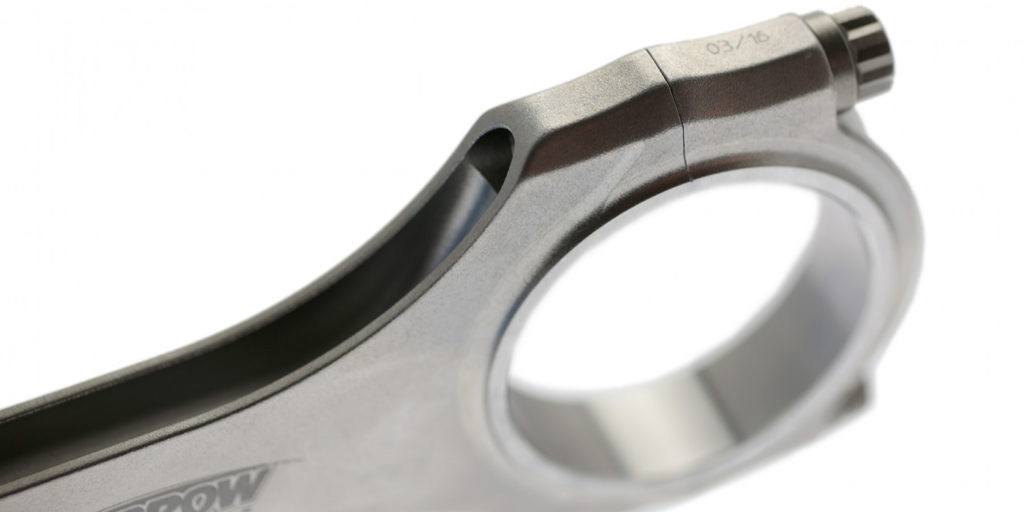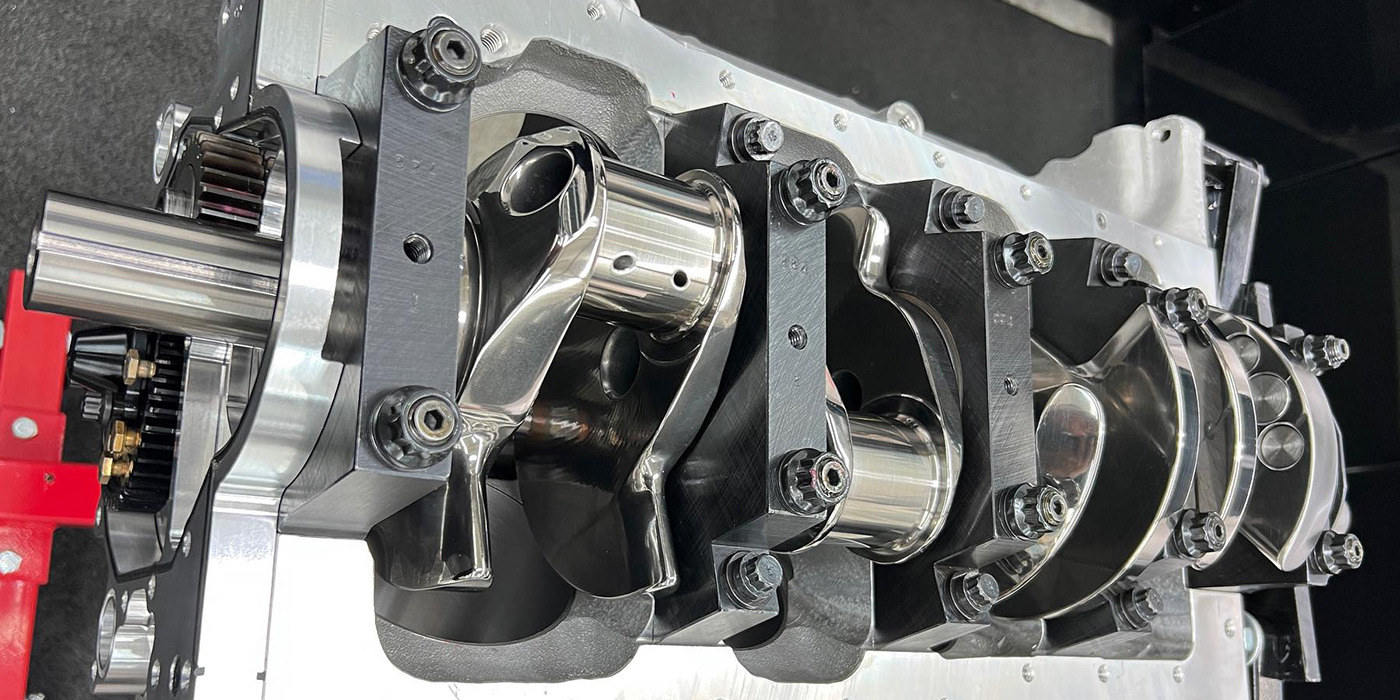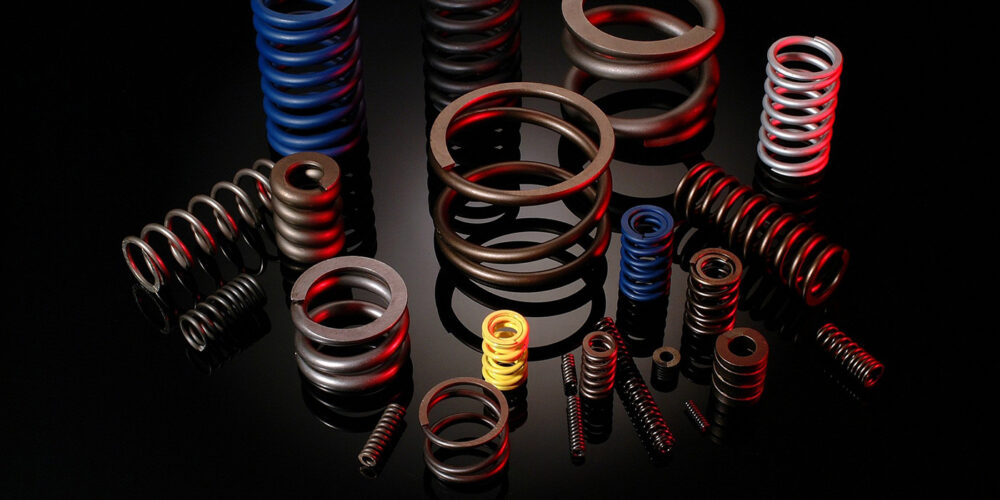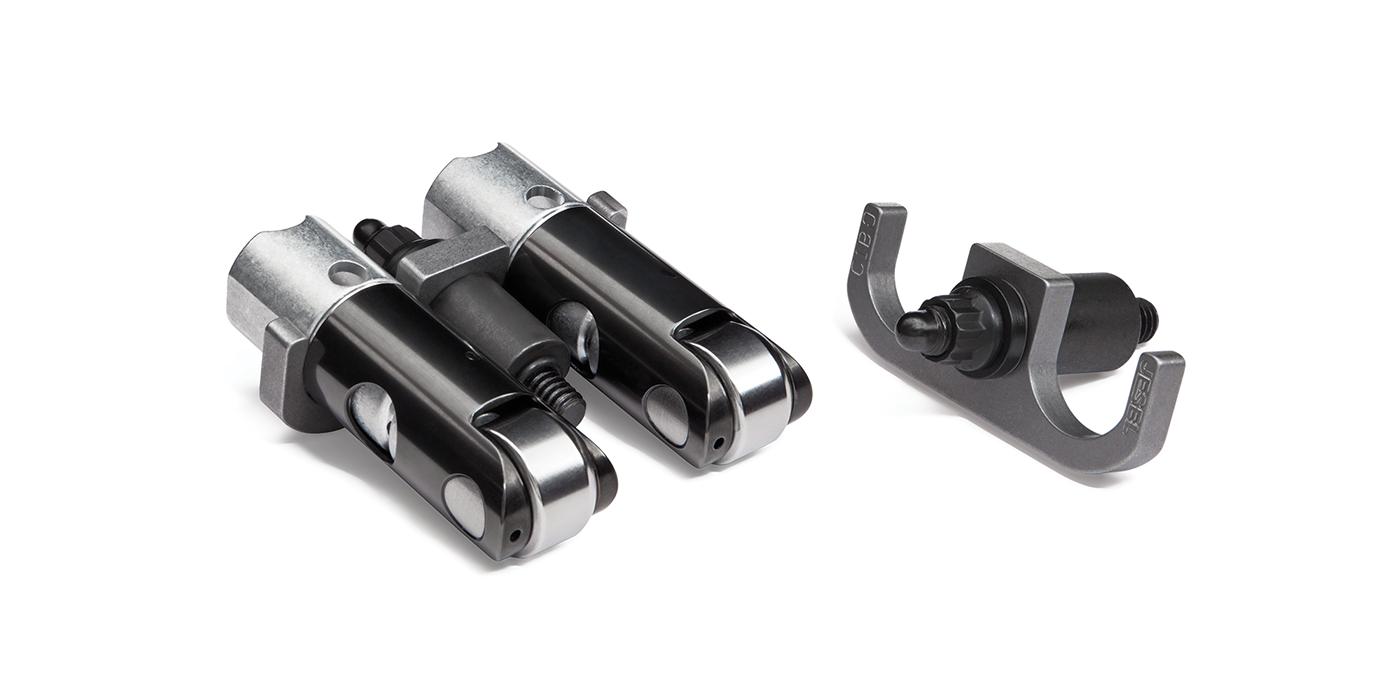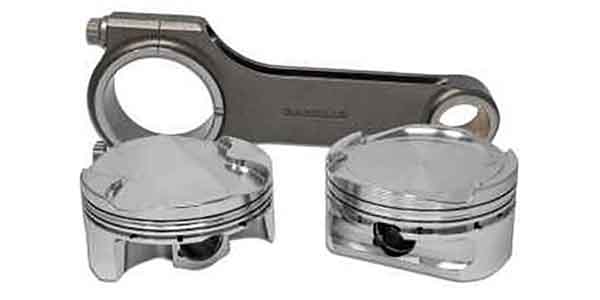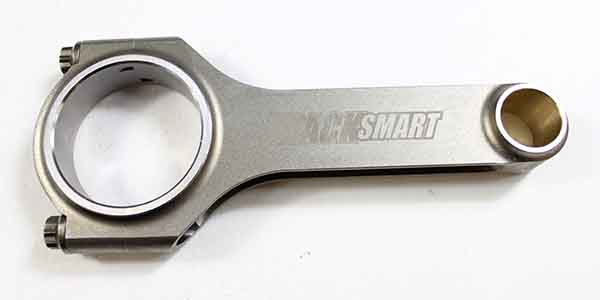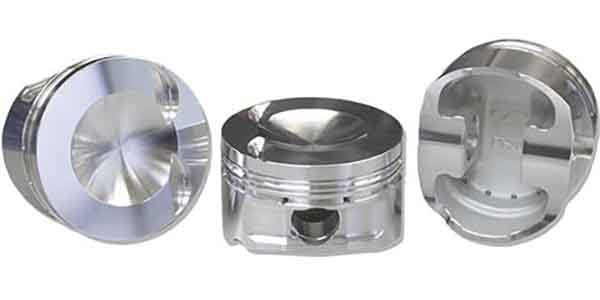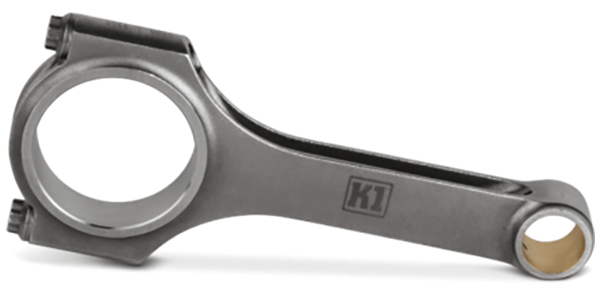Connecting rods are measured between the centers of the crankshaft journal bore and the piston pin bore. They can be listed in either inches or millimeters. The connecting rod’s length will impact the rod ratio. Also, changing the rod length will require new pistons with the correct compression height.
There are two major categories for manufacturing connecting rods – forged and billet. There are a few options for materials such as steel, which most OEMs use, as well as titanium and aluminum. Each has advantages and disadvantages, and it is best to select the material based on your customer’s needs. Titanium is the most durable and lightweight, but the cost and shortened life cycle may offset those advantages.
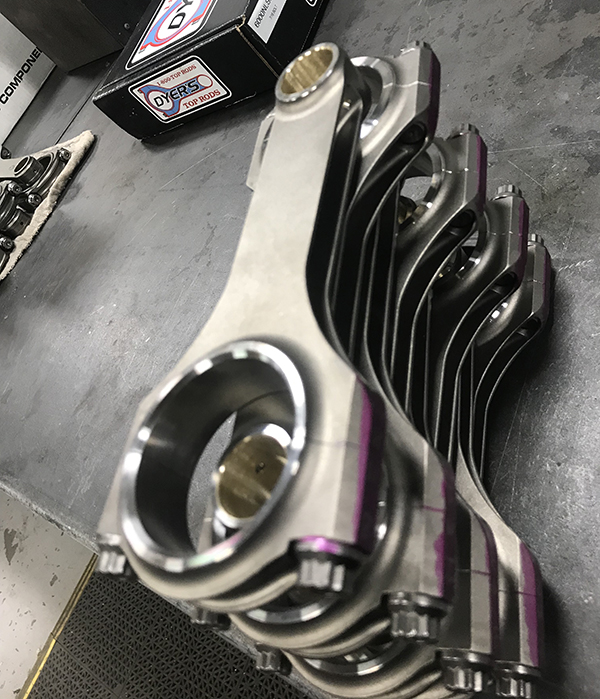
Aluminum connecting rods are often chosen for applications running high rpms and lots of boost because the rod acts like a spring or shock absorber. It cushions the forces of combustion and acts as a buffer between the more expensive pistons and crankshaft. A steel rod may be too rigid and act more like a hammer than a shock absorber, leading to crank damage or failure of the rod itself.
While some aluminum rod manufacturers say they are suitable for street use and can even outlive a steel rod, others caution using them for street applications. An aluminum connecting rod is essentially a spring, and as such, there’s a finite number of times a spring can compress and return without deformation. Deformation is a rod failure. Aluminum has a fixed fatigue life, similar to a titanium connecting rod.
A steel connecting rod might last forever, depending on the application. An aluminum connecting rod could last only a handful of passes, too. Racers and engine builders chose an aluminum rod because of the deformation, which is easier on the piston and crank under high loads. If you want to reduce weight with steel’s strength and longevity, you need to go with a titanium rod. But the price you pay may outweigh your customer’s decision to reduce weight.
The relationship between rod length and the stroke length of the crankshaft is a big deal to some builders and not so much for others. Toying around with rod ratio can make a little more power or a more efficient engine. Changing the length of the rods offers some advantages, however.
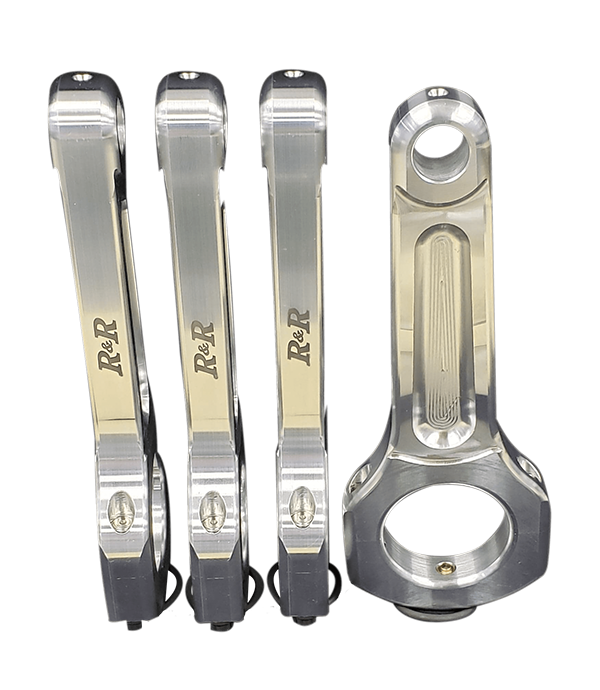
Rod ratio is a math equation based on the relationship between the length of the connecting rod and the crankshaft stroke. Dividing the rod length by the crank stroke gives you the rod ratio. If you’re building a stock SBC 350 with 5.700˝ rods and a 3.480˝ stroke, the rod ratio would be 5.7 (rod length) divided by 3.48 (stroke), which equals 1.64.
If you build the same 350 with 6.000˝ rods, the rod ratio would be 1.72. But if you are building a 383 stroker with 6.000˝ rods, the rod ratio is 1.6 due to the longer stroke of 3.750˝. A lower rod ratio results in more side forces against the cylinder walls, increasing wear on the piston skirts. The increase in friction can also elevate coolant and oil temperatures.
There isn’t a “best” rod ratio for any engine. Some builders prefer to use the longest rods possible to make more mid-range and peak rpm power, while others say it doesn’t matter. There is no hard and fast rule, as there are engines with lower rod ratios that will out-perform engines of the same displacement with higher rod ratios. This is due to differences in the design and porting of the cylinder heads, different valve sizes and valve angles, different camshaft lift and duration, different intake systems and different tuning.
Shorter rods tend to provide better bottom-end power and throttle response in a wider rpm range. Longer rods, however, can produce more top end power within a narrower rpm range. Therefore, longer rods are usually preferred for high-revving endurance applications. But increasing rod length reduces angularity, piston rock and peak piston speed, allowing the piston to dwell longer at top dead center (TDC) on compression and exhaust. Combustion pressure has more time to build up before the piston is forced down. The piston velocity is also higher later on the downstroke. These differences make longer rods work well in higher-revving applications.
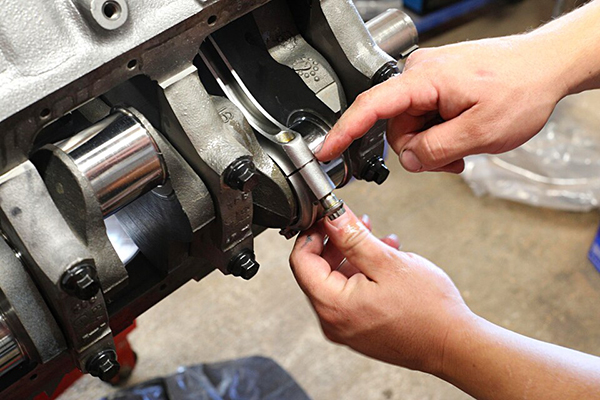
The downside of using longer rods? It reduces the scavenging effect at low rpm. Using a shorter rod pulls the piston away from TDC faster, which improves scavenging. The result is improved airflow and throttle response at low rpm. This is generally preferred for a street performance application.
Rod length also affects airflow in the rpm range where peak power and torque are produced. Therefore, rod lengths should be matched to the cam grind and intake runner volumes in the cylinder heads to optimize performance.
Rod failures happen for any number of reasons. Installer error is a common one. Not torquing a rod bolt right may loosen or break or the rod cap. Lubrication issues at either end can also cause a failure. If a wrist pin seizes in the piston bore, the rod’s small end may snap. The rod bearing can overheat and seize (spin a bearing) if it is starved for oil.
Connecting rods are much stronger in compression than in tension. A weak rod may stretch the rod to the breaking point, causing the small end or big end to fail. Rarely does a rod fail under compression load unless the rod was too weak for a high-horsepower application or the rod had an undetected defect, such as a hairline crack. Imperfections and sharp edges on a rod’s surface can concentrate stresses that may lead to cracking and failure. That’s why performance rods are usually shot-peened or polished.
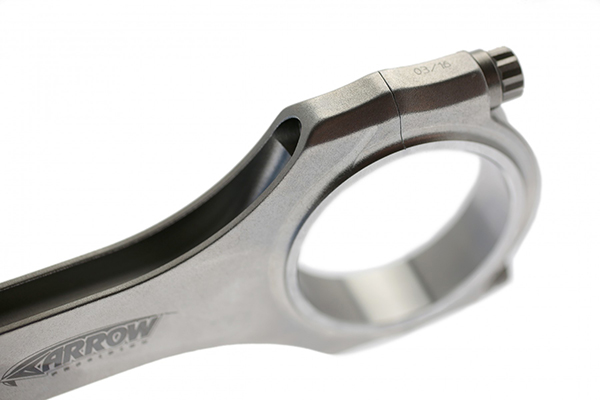
Keep in mind – all rods have a fatigue life. After “X” number of cycles, all metal will fatigue, crack and fail. Different stresses are applied to connecting rods for various applications. For instance, large amounts of torque produce heavy compression and bending loads. High rpms, on the other hand, create mostly tensile-loading or stretching forces. In most cases, connecting rods don’t fail on the compression stroke – they break apart on the exhaust stroke at high rpm due to tensile loading.
Rods can fail in several ways, including tensile failure from high engine speeds, impact force from the piston hitting a valve, or rod bearing failure (usually due to a lubrication problem, or incorrect installation of the connecting rod).
The sideways forces on the piston via the connecting rod can cause the cylinders to wear into an oval shape. This reduces engine performance since the piston rings cannot seal properly against out-of-round cylinder walls. The sideways force is proportional to the connecting rod’s angle. Therefore, longer connecting rods reduce the amount of lateral force and engine wear. But the length of a connecting rod is limited by the engine block size. The stroke length plus the connecting rod length must not result in the piston traveling past the top of the engine block.
An engine making 1,000 hp at 7,500 rpm has a more compressive load than the same engine making 1,000 hp at 10,000 rpm during operation. This is because the engine must work harder to create the same horsepower at a lower rpm. The same is true for an engine making the same power with different displacement. A 350 SBC making 1,000 hp has to work harder than a 572 BBC making 1,000 hp. Both of these situations increase the stress on the components.
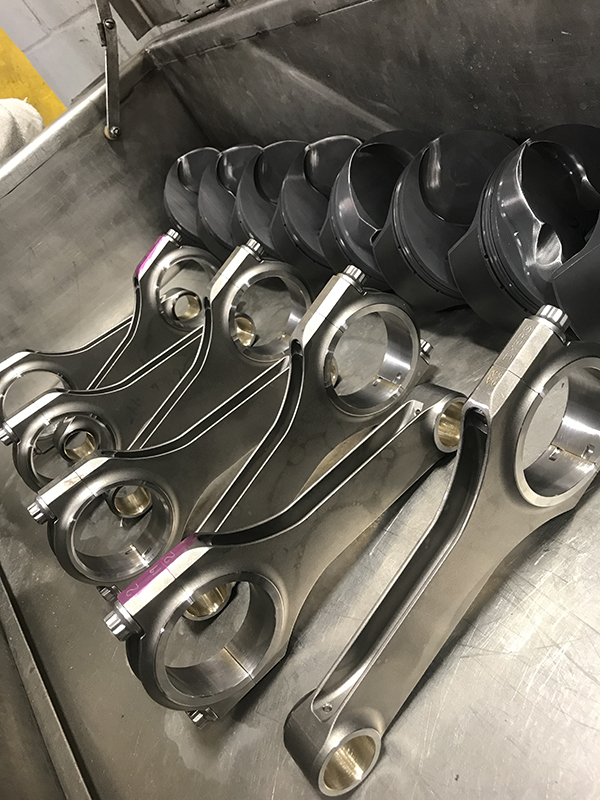
When assembling a connecting rod, bearing crush and clamp load are critical. The correct bearing crush is achieved when there is sufficient clamp load. If there’s too little clamp load, the big end bore of the connecting rod can distort and cause premature bearing or bolt failure.
Proper clamp load is achieved by stretching the fastener. The fastener must first overcome friction in the threads and the surface area under the fastener head before achieving the proper clamp load. This results in an accuracy of +/-25%, depending on the lubricant used. Tightening a fastener through elongation (stretch) gives much better results with a +/-3% accuracy. To achieve the maximum clamp load, you must stretch the bolt to its “proof load.” Stretching the bolt too far yields the bolt and distorts the bore housing. Too little stretch, and there isn’t enough clamp load to keep the split line of the connecting rod closed under engine loads.
There are other important factors to keep in mind when selecting a connecting rod for your application. However, knowing the intended use, i.e., street, strip, road racing; the dimensions: stroke, rod ratio, piston height; whether weight or reliability is more important to your customer; and your customer’s budget all play a factor in understanding how much you have to work with. All of these things will help determine the rod length, material and configuration that’s best for your customer’s application. EB

